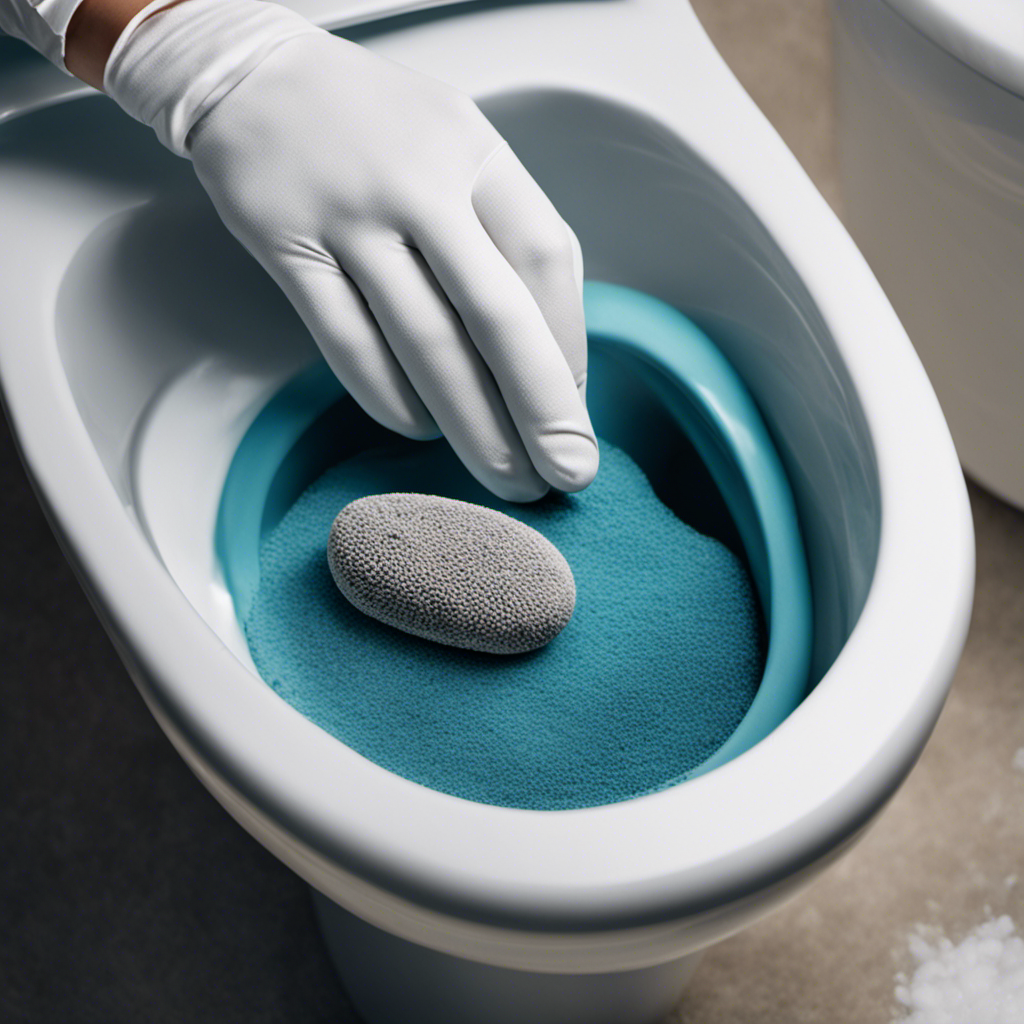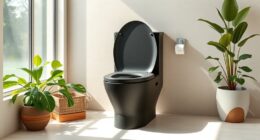Ever been in a tough spot with a toilet drain that won’t clear? Don’t worry, we’re here to walk you through the process of unclogging it.
In this article, we will provide you with a step-by-step guide on how to tackle this common household issue. From gathering the necessary tools to exploring homemade drain cleaner solutions, we will equip you with the knowledge to masterfully unclog your toilet drain.
Let’s dive in and get that drain flowing freely once again.
Key Takeaways
- Gather the necessary tools and materials, such as a plunger with a flange, a toilet auger or snake, baking soda and vinegar, a bucket, and a wrench.
- Assess the severity of the blockage by inspecting the toilet drain for debris, checking the water level and drainage, and looking for signs of a main sewer line blockage.
- Attempt to unclog the toilet using a plunger by ensuring a good seal, submerging the plunger cup in water, and using a rapid and increasing plunging motion.
- If the clog persists, try using a toilet auger by inserting it into the toilet bowl, cranking the handle to extend the cable, breaking through the clog, and retracting the cable.
Gather Necessary Tools and Materials
We need to gather the necessary tools and materials to unblock a toilet drain. Ensuring toilet drain safety is essential during this process.
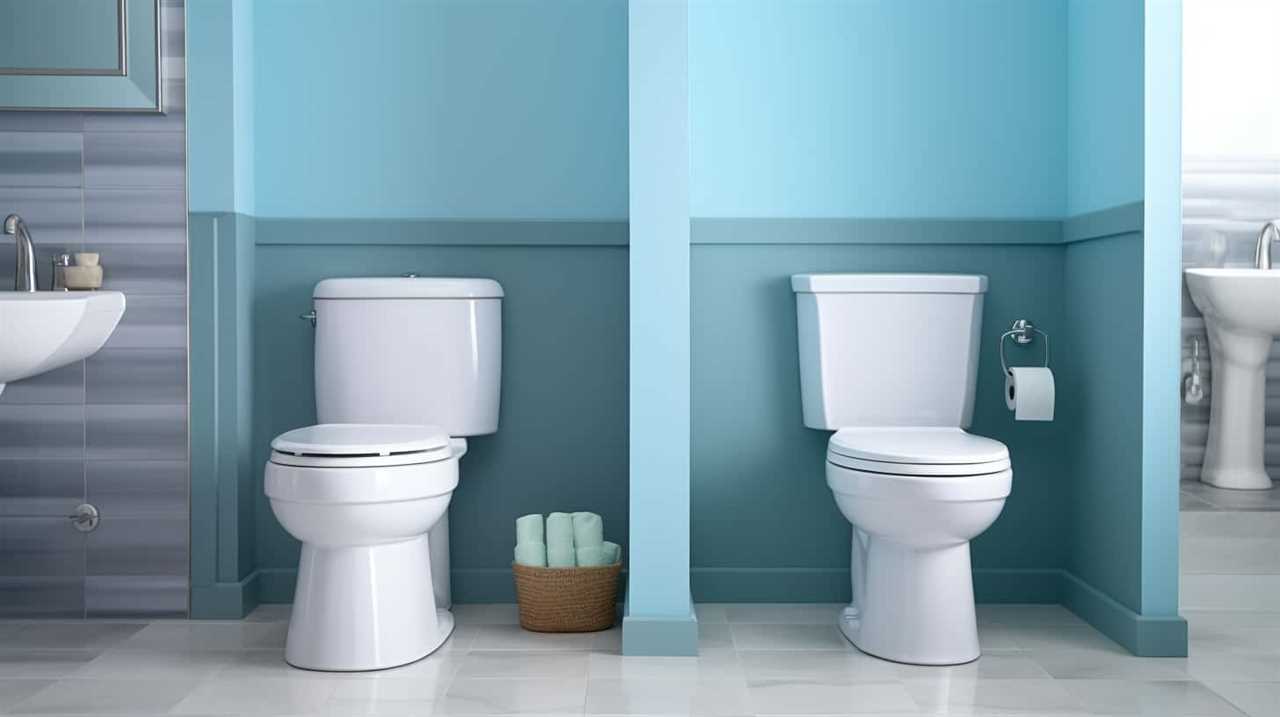
First, we require a plunger, preferably one with a flange for a better seal. The plunger will help create the necessary pressure to dislodge the blockage.
Additionally, a toilet auger or snake can be used to reach deeper clogs.
Eco-friendly drain cleaning options are also available, such as using a mixture of baking soda and vinegar. These natural alternatives are safe for the environment and effective in breaking down blockages.
Once we’ve gathered these tools and materials, we can proceed to assess the severity of the blockage and determine the appropriate steps to take.
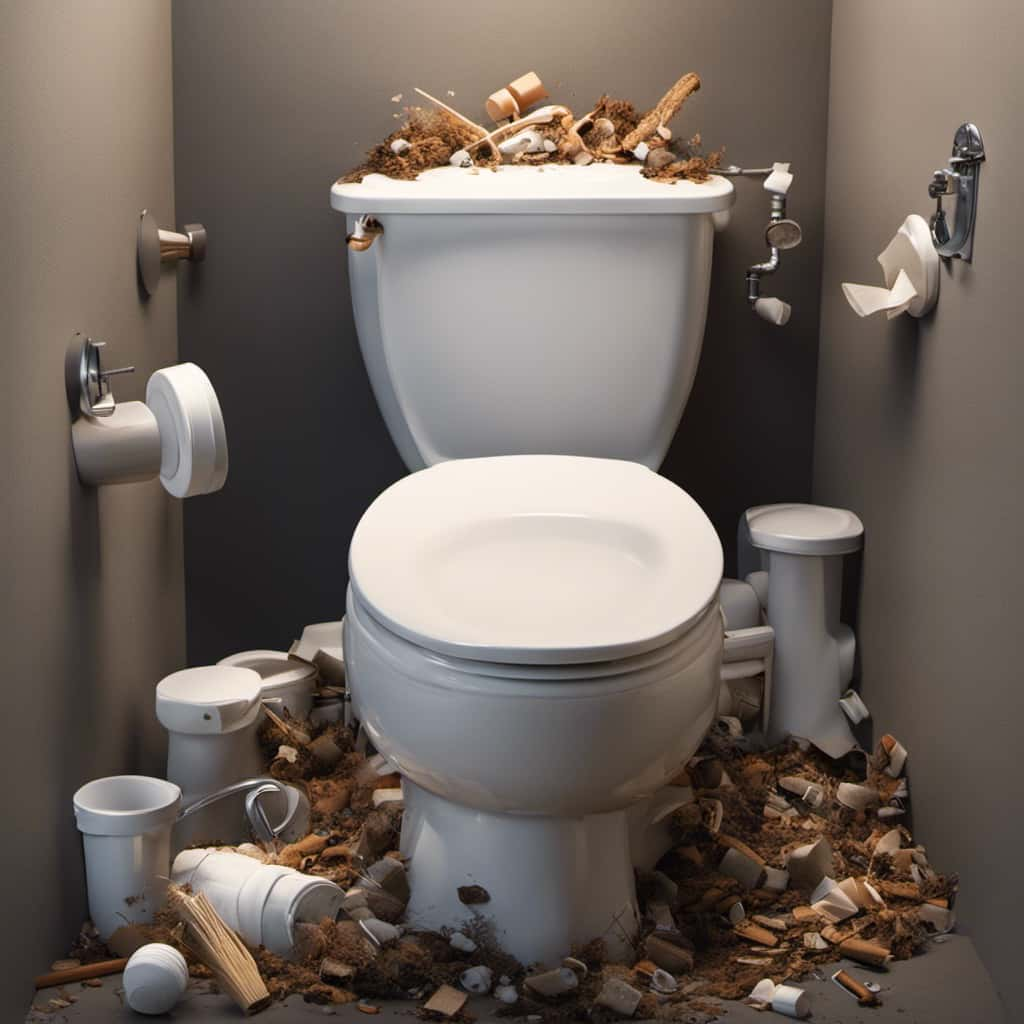
Assess the Severity of the Blockage
To determine the severity of the blockage, we can start by using a flashlight to inspect the toilet drain. This step is crucial in assessing blockage severity and identifying signs of a serious blockage.
Shine the flashlight down the drain and look for any visible debris or obstructions. Pay close attention to the water level in the bowl. If the water is slowly draining or not draining at all, it may indicate a significant blockage.
Additionally, if you notice water backing up into other fixtures, such as sinks or showers, this could suggest a more severe blockage in the main sewer line. Take note of any foul odors or gurgling sounds coming from the drain, as these could also be indicators of a serious blockage.
Attempt to Unclog Using a Plunger
Let’s try using a plunger to unclog the toilet drain. This is a common and effective technique for resolving minor blockages. To ensure success, it’s essential to follow the proper plunger technique. Here are the steps to take:

- Start by choosing the right plunger. A cup-shaped plunger with a flange is ideal for toilets, as it creates a better seal.
- Place the plunger over the drain hole, ensuring it covers the entire opening. Make sure there’s enough water in the bowl to submerge the plunger cup.
- Gently push the plunger down, then pull it up in a rapid motion. Repeat this plunging motion several times, maintaining a strong seal between the plunger and the drain hole.
- Gradually increase the intensity of your plunging, applying more force with each plunge. This action creates pressure that can dislodge the clog.
Common Mistakes:
- Using a flat or sink plunger instead of a toilet plunger, which may result in an ineffective seal.
- Insufficient water in the bowl, leading to inadequate pressure.
Use a Toilet Auger for Stubborn Clogs
To effectively tackle stubborn clogs in a toilet drain, we need to utilize a toilet auger. A toilet auger, also known as a closet auger, is a specialized tool designed specifically for clearing toilet clogs. It consists of a long, flexible cable with a curved end and a handle. Here’s how to use a toilet auger to tackle stubborn clogs:
- Insert the curved end of the toilet auger into the toilet bowl, making sure it goes in as far as possible.
- Crank the handle clockwise to extend the cable into the drain.
- Once you feel resistance, continue cranking to break through the clog.
- Slowly retract the cable while continuing to crank to ensure the clog is fully cleared.
- Flush the toilet to check if the clog has been successfully cleared.
If a toilet auger doesn’t resolve the stubborn clog, there are alternative methods such as using a drain snake or calling a professional plumber.
To prevent future clogs, remember to avoid flushing items that can easily cause blockages, such as sanitary products, wipes, or excessive toilet paper. Regular maintenance, such as using enzyme-based drain cleaners, can also help keep your toilet drain clear and functioning properly.

Try a Homemade Drain Cleaner Solution
For our stubborn clogs in the toilet drain, we can try using a homemade drain cleaner solution. Instead of relying on commercial products, there are natural remedies for unclogging toilets that can be just as effective. One option is to combine baking soda and vinegar, which creates a chemical reaction that helps break down the clog. Another alternative is using a mixture of hot water and dish soap. This can help lubricate the clog and allow it to be easily flushed away. Remember to always exercise caution when working with drain cleaner solutions and follow safety guidelines. If the homemade remedies don’t work, it may be time to explore commercial drain cleaning products for a more powerful solution.
| Homemade Drain Cleaner Alternatives |
|---|
| Baking Soda and Vinegar |
| Hot Water and Dish Soap |
Explore Commercial Drain Cleaning Products
After trying homemade drain cleaner solutions without success, we decided to explore commercial drain cleaning products to tackle our stubborn toilet clog.
When it comes to unblocking a toilet drain, it’s important to explore alternative methods to find the most effective solution. Commercial drain cleaning products offer several advantages and disadvantages that should be considered before use:
- Pros of chemical drain cleaners:
- Powerful formula that can dissolve tough clogs
- Convenient and easy to use
- Readily available in most stores
- Cons of chemical drain cleaners:
- Harsh chemicals that may harm pipes or the environment
- Potential health risks if not used properly
- Can be expensive compared to homemade solutions
It is crucial to weigh the pros and cons of chemical drain cleaners before deciding to use them. Understanding their potential risks and benefits will help you make an informed choice in tackling your toilet clog.

Contact a Professional Plumber as a Last Resort
If our attempts to unblock a toilet drain using homemade and commercial solutions have failed, we should consider contacting a professional plumber as our last resort. Knowing when to call a plumber is essential, as it can prevent further damage to our plumbing system.
There are signs of a serious blockage that indicate the need for professional intervention. One such sign is if multiple drains in our home are affected simultaneously. This suggests a blockage deeper in the main sewer line. Another sign is if we notice water backing up into other fixtures when we flush the toilet. This could indicate a blockage in the main sewer line or a vent pipe issue.
Frequently Asked Questions
How Long Does It Typically Take to Unblock a Toilet Drain Using a Plunger?
Typically, it takes a few minutes to unblock a toilet drain using a plunger. However, if the blockage persists or if you’re unsure how to proceed, it’s important to know when to call a professional plumber. There are also alternative methods for unblocking a toilet drain.
Can I Use a Toilet Auger to Unblock Other Drains in My House?
To prevent toilet drain blockages, consider alternatives to a toilet auger. Regularly maintaining drains with hot water, vinegar, and baking soda can help prevent clogs.

Are There Any Homemade Drain Cleaner Solutions That Are Safe to Use With Septic Systems?
There are homemade drain cleaner recipes that are safe for septic systems. Proper septic system maintenance is crucial. Regular pumping, avoiding harsh chemicals, and using natural solutions like vinegar and baking soda can help maintain a healthy septic system.
What Are the Potential Risks of Using Commercial Drain Cleaning Products?
Using commercial drain cleaning products can pose risks to both your health and the environment. However, there are alternatives to chemical cleaners such as using a plunger, a drain snake, or a mixture of baking soda and vinegar.
How Much Does It Cost to Hire a Professional Plumber to Unblock a Toilet Drain?
When considering the cost comparison of hiring a professional plumber to unblock a toilet drain versus using DIY methods, it is important to weigh the potential risks and benefits of each option.
Conclusion
In conclusion, if you find yourself facing a stubbornly blocked toilet drain, fear not! Armed with the right tools and a little know-how, you can tackle this messy situation with ease.
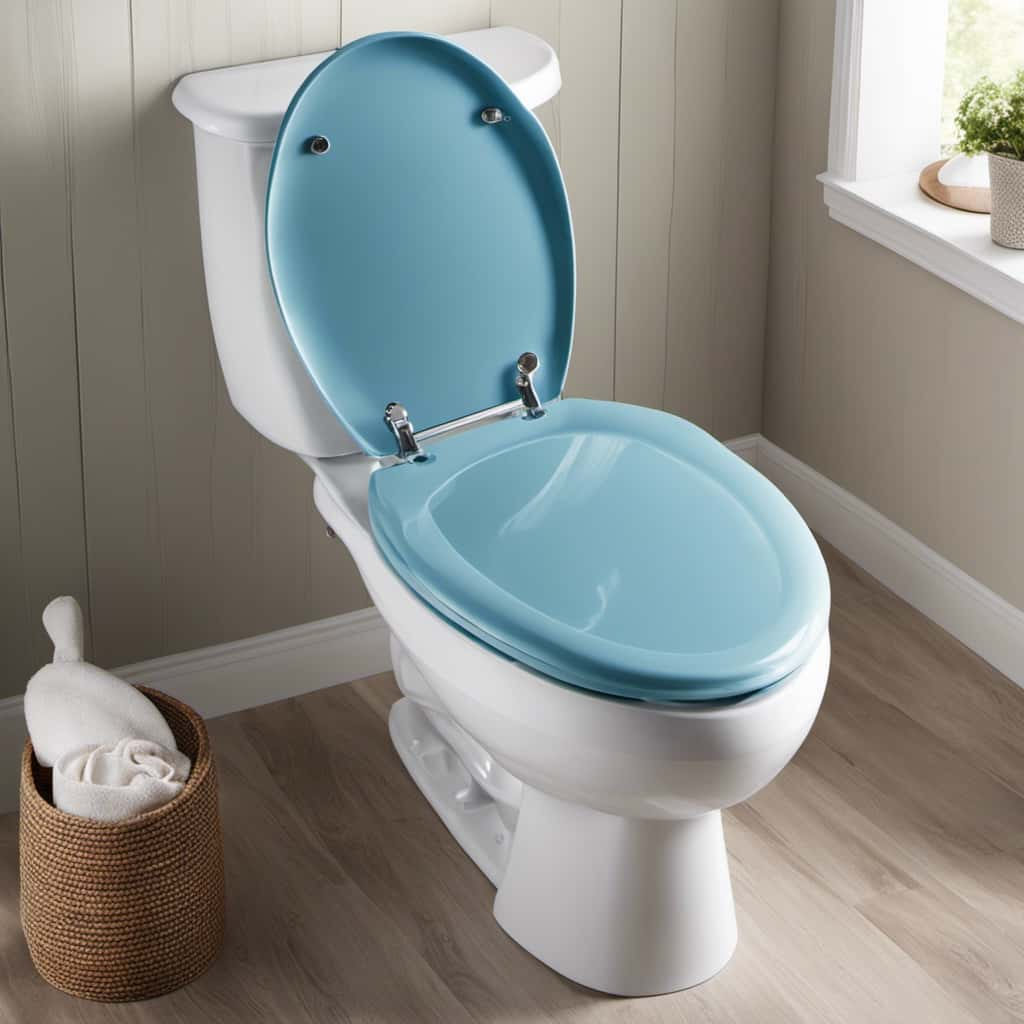
From plungers to homemade drain cleaners, we’ve covered a range of solutions to help you get your toilet flowing freely again.
And remember, if all else fails, don’t hesitate to call in the professionals. You’ll be flushing away your worries in no time!



